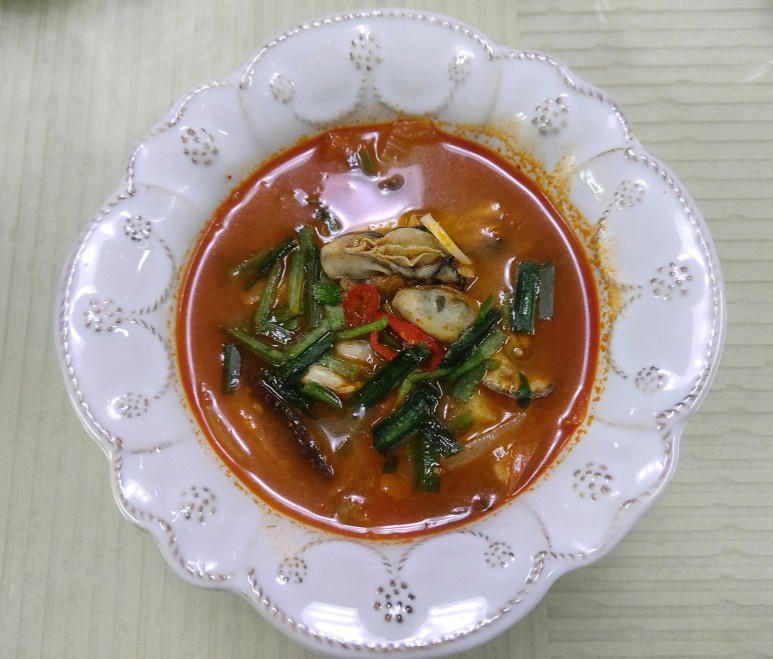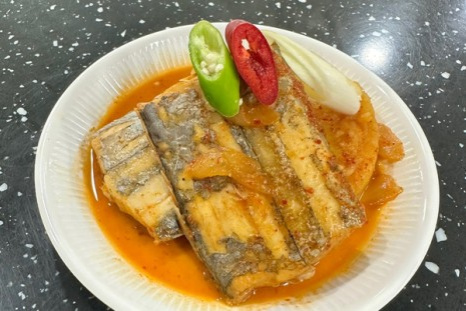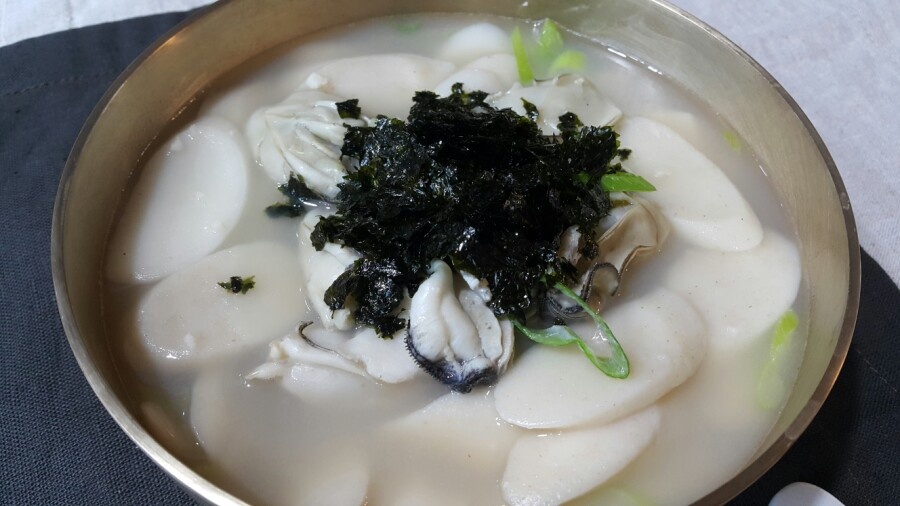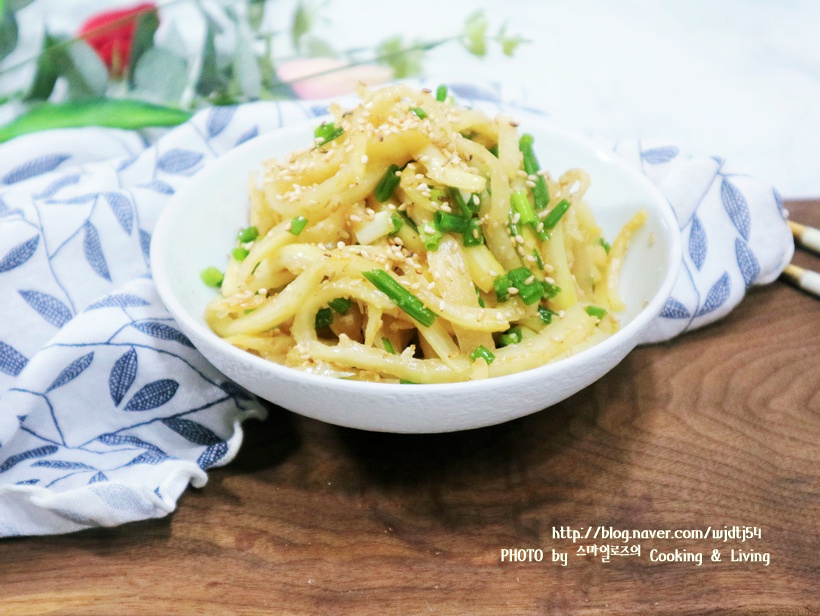Delicious Winter Delicacy! Spicy Oyster and Vegetable Stew (Gul Gaejang)
How to Make a Spicy and Refreshing Oyster and Vegetable Stew with Seasonal Oysters

Today, I’m sharing a truly satisfying and hearty soup: Gul Gaejang! This dish offers a unique charm, distinct from Jjamppong, and is a winter delicacy that will captivate your taste buds. Fresh oysters, crisp napa cabbage, and refreshing radish come together to create a deep and spicy broth. I created this recipe specially for my family who loves oysters but doesn’t particularly enjoy oyster soup or oyster pancakes. This spicy version is perfect for enjoying with a bowl of rice. The refreshing taste of oysters combined with the spicy broth makes for an ultimate winter meal!
Main Ingredients- 350g fresh oysters
- 250g napa cabbage (focus on the leaves)
- 150g radish (about 1/4 of a small radish)
- 1/2 onion
- 1 stalk green onion (scallion)
- 2 Korean red chili peppers (or more, to taste)
- 30g chives
- Mushrooms (shiitake, enoki, etc.) – a small amount
Seasoning & Broth- 2 Tbsp chili oil
- 2 Tbsp gochugaru (Korean chili flakes, adjust to taste)
- 1 Tbsp soy sauce for soup (guk-ganjang)
- 2 Tbsp fish sauce (anchovy or sand lance)
- 1/3 Tbsp salt (adjust to taste)
- 1L water
- 200ml commercial beef bone broth or anchovy-kelp broth
- 2 Tbsp chili oil
- 2 Tbsp gochugaru (Korean chili flakes, adjust to taste)
- 1 Tbsp soy sauce for soup (guk-ganjang)
- 2 Tbsp fish sauce (anchovy or sand lance)
- 1/3 Tbsp salt (adjust to taste)
- 1L water
- 200ml commercial beef bone broth or anchovy-kelp broth
Cooking Instructions
Step 1
First, prepare the vegetables that will add a refreshing flavor to the broth. You can use any leftover vegetables you have in the fridge, but it’s highly recommended to include napa cabbage for its crisp texture.

Step 2
Slice the radish into thick, bite-sized pieces, about 0.5 cm thick. Cut the napa cabbage into large pieces and slice the onion into strips. Chop the green onion lengthwise and broadly to infuse the broth with its aroma. Finely chop the Korean red chili peppers and thinly slice the shiitake mushrooms or any other mushrooms you are using.

Step 3
In a deep pot, add the chopped green onions and 2 tablespoons of chili oil. Sauté over medium-low heat to release the green onion aroma, then add 1 tablespoon of minced garlic. Continue to cook until the aroma of garlic and green onion is fragrant. You can add the gochugaru at this stage to cook with the aromatics for a deeper flavor, but I prefer to add it later when seasoning. Be careful not to burn the garlic and green onions.

Step 4
Once the green onions and garlic are fragrant, add the sliced radish, napa cabbage, and onion. Stir-fry them together until they start to soften slightly. Then, pour in 1L of water and 200ml of commercial beef bone broth. If you don’t have beef bone broth, anchovy-kelp broth or rice water can be used. Cover the pot and simmer until the radish and napa cabbage are tender.

Step 5
After the vegetables are well-cooked, add 1 tablespoon of soy sauce for soup and 2 tablespoons of fish sauce to enhance the savory flavor. Now, it’s time to make it spicy! Generously add 2 tablespoons of gochugaru. If you didn’t add it earlier with the aromatics, now is the time. Taste the broth and adjust the seasoning with salt as needed. It’s important to get the seasoning right for a spicy and refreshing broth.

Step 6
At this point, adding mushrooms will enrich the broth and add a pleasant chewiness. I’ve added shiitake mushrooms for added aroma and texture. Feel free to use enoki mushrooms or other varieties according to your preference.

Step 7
Finally, add the fresh oysters, chives, and chopped Korean red chili peppers. Oysters can become tough if overcooked, so add them over high heat and simmer for only about 2 minutes. As the oysters cook, they will release their refreshing flavor into the broth.

Step 8
There you have it – delicious Gul Gaejang is ready! Tonight, this stew alone will make a perfect meal. You can enjoy it heartily without needing many side dishes.

Step 9
This oyster and vegetable stew offers a distinct refreshing and spicy flavor, different from beef galbi-jjim or Jjamppong. The deep umami from the oysters makes it an excellent choice for a hangover remedy as well.

Step 10
With plenty of fresh oysters added, it’s exceptionally refreshing and delicious. This special Gul Gaejang, which you’ll think of every time seasonal oysters are available, will surely become your favorite winter dish. Enjoy your meal!

Step 11



